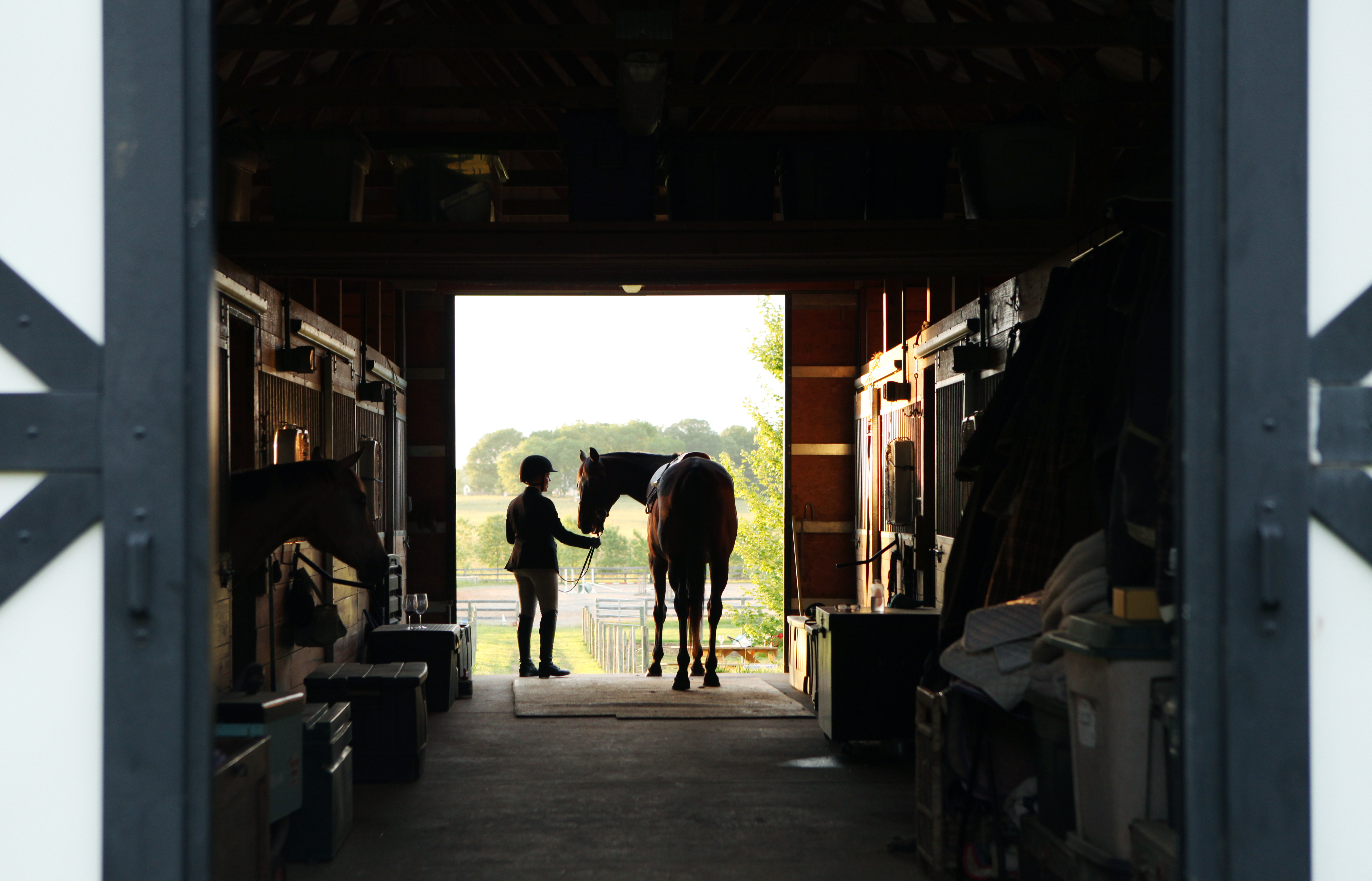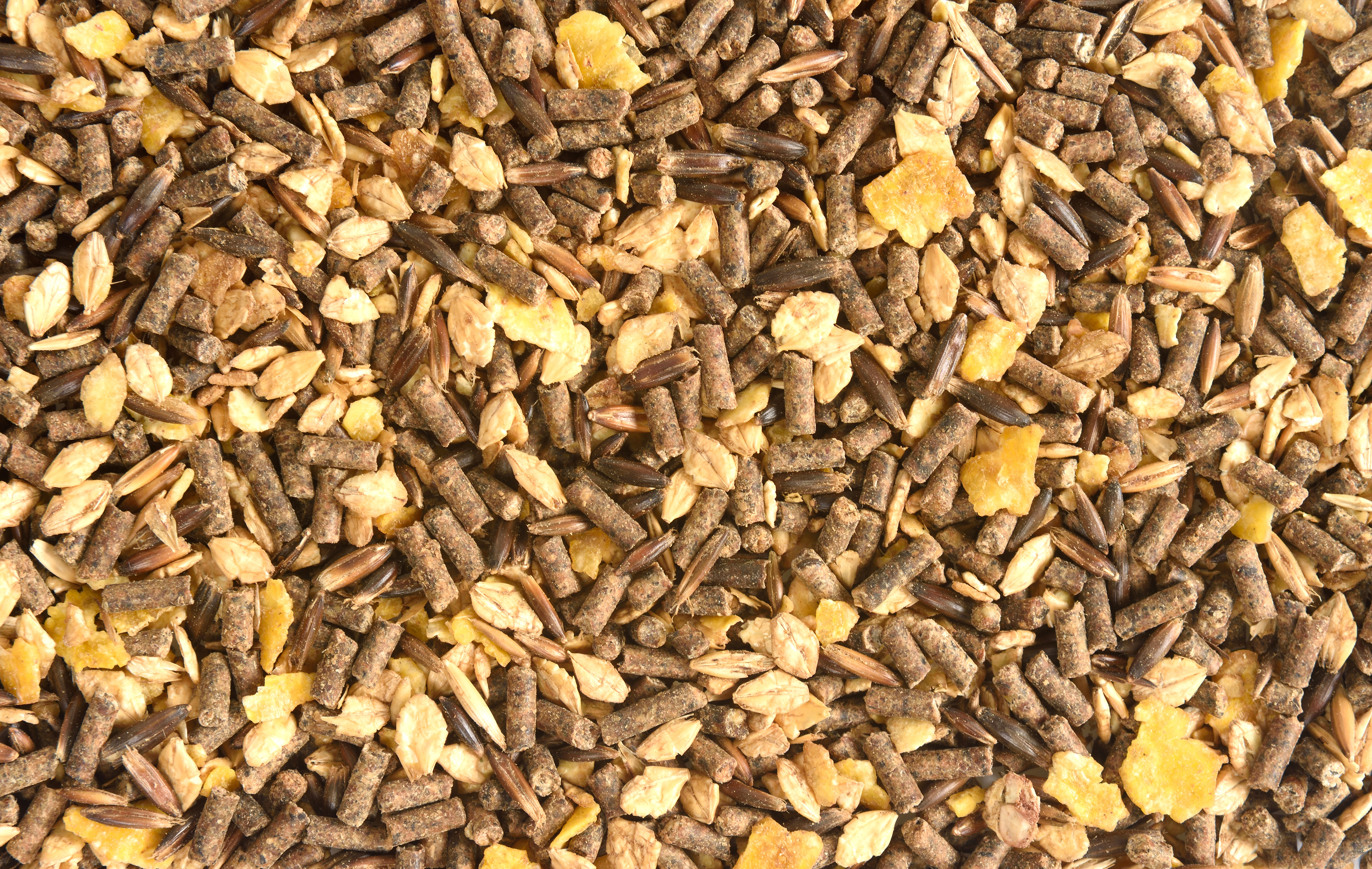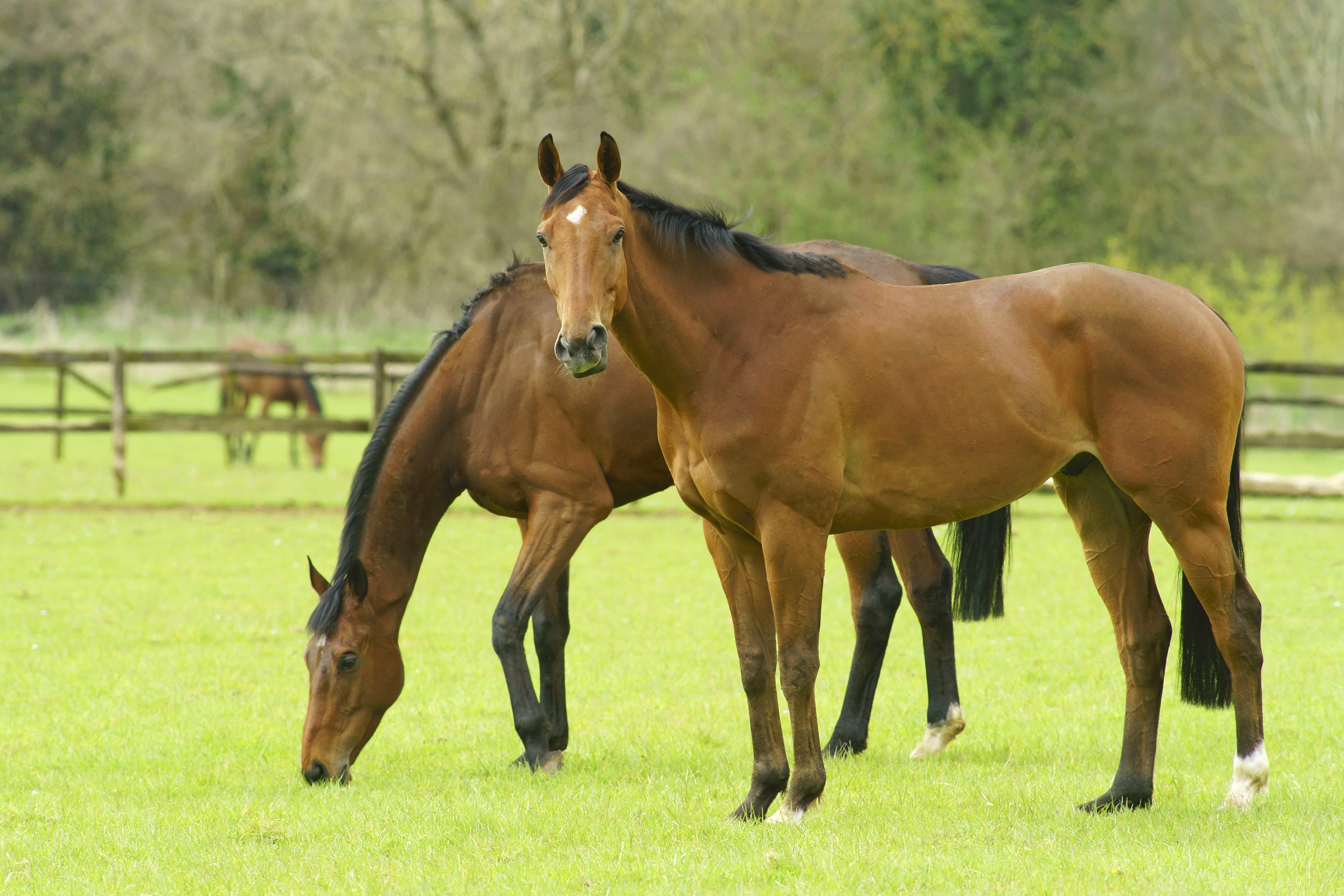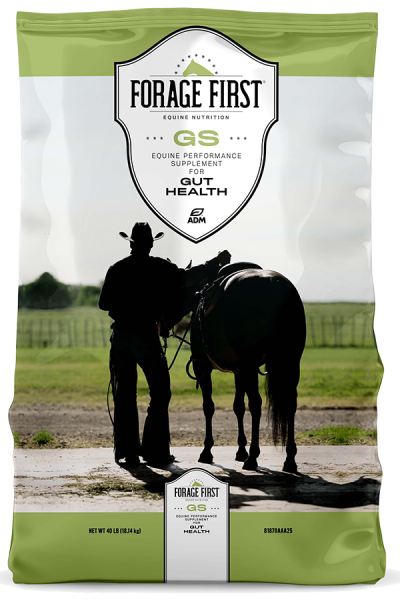Home > Horse Care > Nutrition > ADM Ask a Pro: Q1 Gut Health
ADM Ask a Pro: Q1 Gut Health
- May 22, 2021
- ⎯ ADM
Did you know that 90% of performances horses (from jumpers to equines working cows, etc.) have gastric issues due to man-made conditions such as stress, intermittent feeding, restricted access to pasture, etc.? What do we mean by “man-made”? That’s taking a horse out of his natural habitat, putting him in a stall and feeding him once or twice a day. Sound familiar?

Horses were built to graze pasture 24/7, and by changing that routine, that’s “man-made.” But we all or many of us—do that, right? Stable them for part of the day, turn out when we can, have a consistent feeding program and so forth. However, sometimes we need to address gastric issues further. Therefore, we have to come up with something to help them treat or combat that—and it starts with nutrition.
We asked our resident ADM Nutrition Pro, Dr. Lattimer, for his take on identifying gastric issues in horses and how to provide the best nutrition to help them overcome it.
“Most of the time there are behavioral changes; they just flat-out hurt. One telltale sign is becoming what we call, ‘cinchy,’” he says. “They will lay their ears back, turn around, and show their discomfort due to increased pressure on the stomach. They could become grumpy, grind their teeth, eat less, have a poor body condition and reduced performance. Similarly, they may also object to what we ask of them. For example, a barrel horse not wanting to enter the arena. It is not uncommon for horses who suffer from gastric pain to become consistently ‘cast’ in their stalls. They don’t know what to do besides lay down and roll around to relieve their discomfort,” Lattimer advises.
“If you’re wanting a definite diagnosis, bring in your vet. To determine if your horse is having gastric issues, changes or ulcers, an endoscopy will need to be performed. This will not harm or create further issues for the horse. It can be pricey, but it will give you a clear visual of the healthy status of the lining of the stomach and is the only way to clinically diagnose Equine Gastric Ulcer Syndrome (EGUS). Some people will elect to not have the procedure and choose to try and treat the behavioral and other identifiers. Many tend to treat with costly drugs such as Omeprazole that can run around $1,000 a month. Keep in mind just dietary changes don’t cost nearly as much and can be a lot easier to implement in the grand scheme of things.”
Lattimer expands on how to change certain aspects of the horse’s day and dietary intake to address gastric issues: “It’s all about trying to correct or change the things that are causing the gastric ulcers. A big one is stress. It can come in a variety of ways: exercise, trailering, putting him in a stall–pretty much everything we do causes stress in one way or another. Sometimes that’s a little hard to believe, I know. We should do all that we can to help minimize stressful situations.

“Horses were designed to consume many small meals throughout the day,” he continues. “As a result, their stomachs continually secrete hydrochloric acid (HCl), which aids in the digestive process. This strong acid is normally buffered by the forage and saliva via these continual meals. But when we feed them one to two times per day, the stomach sits empty for several hours each day all while HCl is being secreted. Eventually this low gastric pH starts to overwhelm the stomach’s natural barrier and defense mechanisms, irritating and harming the lining of the stomach. Eventually this can manifest in ulceration. The more times we can feed a horse throughout the day, the better. However, feeding a horse four to six times per day is logistically impossible, with work demands and such.”

Lattimer put it simply: “A horse out on pasture has less risk of ulcers than a stalled horse. Sometimes it’s not possible, but it doesn’t change the fact it’s not what they were designed or created to do.”
Now that Lattimer has addressed how to feed, he dives into specific nutrition: “Another aspect to keep in mind when addressing gastric issues is a high concentrate diet. To a nutritionist, anything out of a ‘bag’ is a concentrate. When we decrease the forage-to-concentrate ratio (for example: a racehorse gets 10 lbs. of a concentrate and a 20 lbs. of forage per day, while the trail horse receives five lbs. of concentrate and 25 lbs. of forage per day), the racehorse is at increased risk of EGUS. He has increased HCl and decreased saliva due to the high concentrate. Also, if that concentrate is high starch, it only increases the risk. Increasing the forage-to-concentrate ratio will decrease the risk for EGUS. Similarly, replacing fat for starch in our concentrate will also help maintain a healthier stomach.”
Lattimer also blames overuse of certain drugs known to be associated with ulcers, as well: “The other big culprit of ulcer development is chronic nonsteroidal anti-inflammatories (NSAIDS), aka phenylbutazone. It increases HCl secretion and decreases gastric blood flood and mucus secretion. Mucus provides a barrier between HCl and the stomach lining, thus acting as a natural protectant. If you have a horse that’s sore and you give him bute all the time, it really increases the change of EGUS.”
In summary, Lattimer suggests this key takeaway: “All in all, you want to minimize stressful situations as much as possible, replace intermittent feeding with continual feeding, decrease the starch intake, increase the fat intake (fat doesn’t cause a drop in gastric pH like starch), replace grass hay with alfalfa if possible (high in calcium and protein which are both natural buffers) and minimize NSAID use.”

Choosing a product for Gastric Health:
If you’re interested in a product that is easy to implement into your feeding program and that helps aid in the gastric health of your horse, consider ADM’s Forage First GS. Formulated with key ingredients to promote a healthy gastric environment, this new product is currently being tested at veterinary clinics around the country. Horses are presented to the veterinarian with symptoms of EGUS and undergo an endoscopy. Each horse’s gastric lining is then scored from 0 to 4. Zero is healthy, with no ulceration, while a 4 has severe bleeding ulcers. Horses are then put on Forage First GS for 30 days with no other change in their routine. After 30 days, the horses are re-scoped. To date, six horses, all with grade 2 ulcers, have been enrolled in the study. Three of the horses decreased their ulcer score from a grade 2 to a grade 0, completely resolved, while the other three decreased from a grade 2 to a grade 1.
To learn more about Forage First GS and other ADM products, click here.
To read about more topics we cover with ADM’s Equine Nutritionist, Dr. James Lattimer head back to the pro’s page here.





